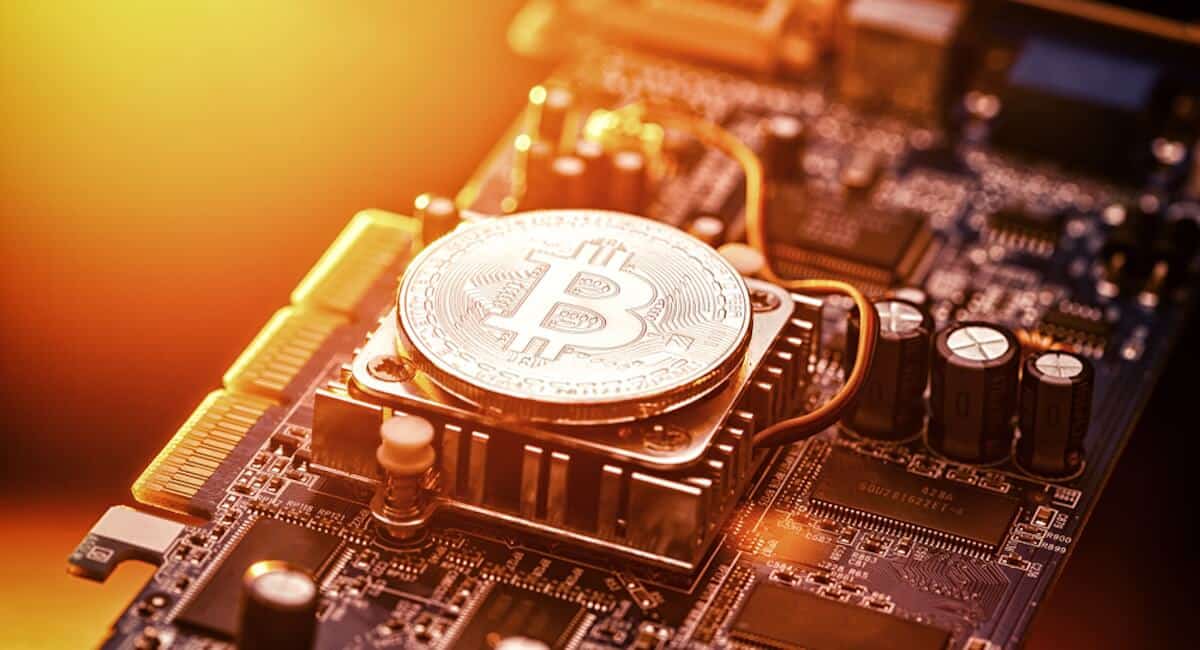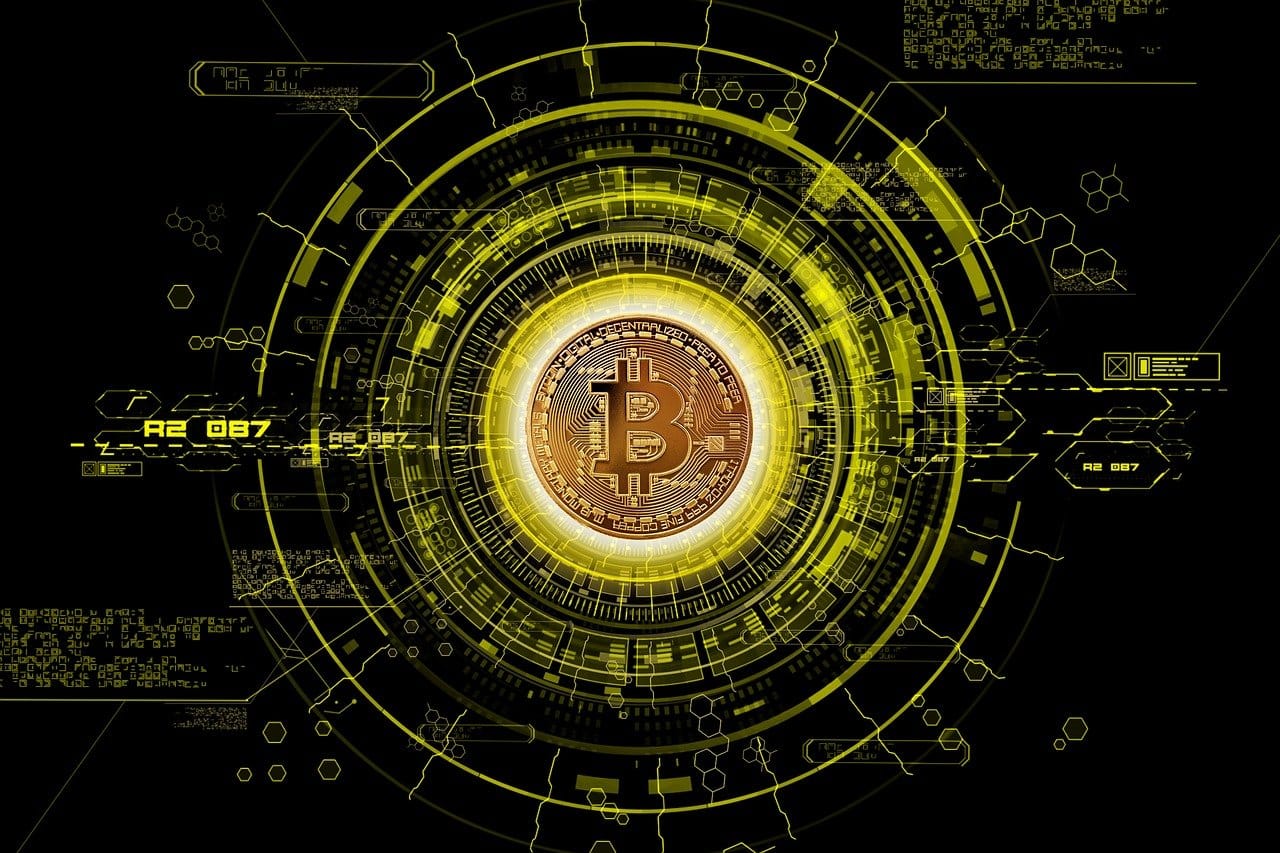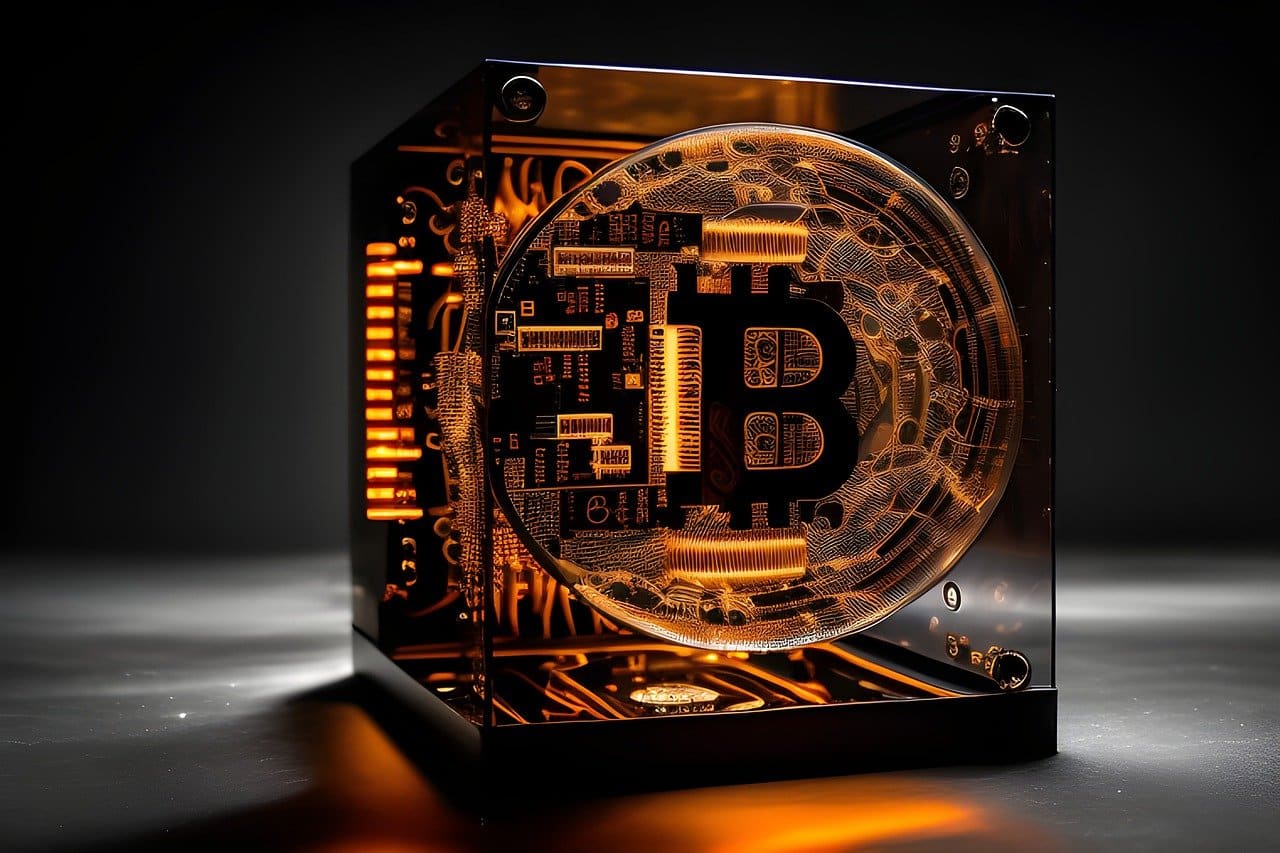What is Proof-of-Work (PoW) in Crypto?

Proof-of-work (PoW) is the consensus mechanism that fuels the Bitcoin blockchain. It ensures Bitcoin remains a decentralized and secure ecosystem without needing to rely on intermediaries.
In this beginner’s guide, we answer the question ‘What is Proof-of-Work?‘. Read on to learn how proof-of-work functions and why it’s crucial to the Bitcoin network.
What is PoW in Simple Terms?
Proof-of-work is a consensus mechanism that keeps Bitcoin decentralized. It enables the network to reach a ‘consensus’ without needing third parties. This is unlike traditional finance, which requires intermediates to process transactions.
- For instance, consider the process of making a bank transfer.
- Before the funds are released from your account, the transfer requires authorization from the bank.
- The recipient’s bank must also approve the transaction before the funds are credited.
- This means the bank transfer requires two intermediaries before a consensus is reached.
In contrast, Bitcoin transactions reach a consensus from the proof-of-work mechanism. Every 10 minutes, a new block of transactions is posted to the blockchain ledger for approval. Consensus is only reached once a unique, cryptographic equation is solved. Anyone can attempt to solve the equation, but it requires highly advanced hardware.
Once the equation is solved, the block of Bitcoin transactions is posted to the blockchain. The ‘miner’ who was successful in solving that block receives a 6.25 BTC reward. After that, a new block of transactions is posted, giving miners another chance. This process happens every 10 minutes.
The proof-of-work process consumes vast amounts of energy. This is because of how complex the mining equation is. This is where the ‘work’ element comes from. Similar to mining for gold, Bitcoin transactions require effort before they’re marked as valid.
This is the proof-of-work mechanism in a nutshell.
The Origins of Proof of Work
The proof-of-work concept traces its roots to the 1990s. The term was coined by Cynthia Dwork and Moni Naor in their peer-reviewed study, Pricing via Processing or Combatting Junk Mail. Put simply, proof-of-work was a means to combat email spam and prevent server abuse. It required users to complete a computational puzzle before emails were processed.
Fast forward to 2008 and the Bitcoin whitepaper adopted the proof-of-work mechanism. Instead of keeping emails safe, proof-of-work was implemented to secure the Bitcoin network. It ensures that only legitimate transactions are verified and posted to the blockchain. For instance, proof-of-work ensures that the same Bitcoins cannot be spent twice.

Since Bitcoin was launched, other consensus mechanisms have been developed. One of the most popular is proof-of-stake (PoS), which is now used by the Ethereum blockchain. Although some Bitcoin stakeholders have argued for proof-of-stake to be implemented, proof-of-work remains the preferred option. This is because proof-of-work ensures higher levels of decentralization and network security.
How Does PoW Work?
Proof-of-work allows the Bitcoin ecosystem to verify transactions without needing third-party involvement. It ensures that the original Bitcoin ethos is respected; true peer-to-peer transactions between senders and receivers. However, without ‘miners’, the proof-of-work mechanism wouldn’t function.
Anyone can be a miner. It’s just a case of connecting specialist hardware to a computer device. Every 10 minutes, each mining device will attempt to solve the next cryptographic puzzle. This is based on a ‘trial and error’ process. Mining devices constantly attempt new solutions until the puzzle is solved. The first miner to solve the puzzle wins the 10-minute Bitcoin reward. And the process repeats again.
Still asking the question: What is proof of work? Let’s take a closer look at the fundamentals to help clear the mist.
Mining Process
Mining sits at the heart of proof-of-work and the Bitcoin network. It helps keep Bitcoin decentralized through incentivization. This is because miners are financially motivated to ensure only legitimate transactions are verified. And that anything else is rejected and removed from the Bitcoin ledger. The financial reward for solving a mining reward was originally 50 BTC.
Within the Bitcoin code, the mining reward is reduced by 50% every 210,000 blocks. One block is mined in about 10 minutes, so the Bitcoin halving event takes place approximately every four years. So, in 2012, 2016, and 2020, the mining reward was reduced to 25 BTC, 12.5 BTC, and 6.25 BTC respectively. In April 2024, the mining reward will reduce again to 3.125 BTC.
So now you know that proof-of-work is based on financial incentives, how does mining actually work?
In a nutshell, miners compete to solve super-complex equations. These equations are too complex for humans to solve manually. This is why Bitcoin miners need specialist hardware devices. CPUs and GPUs used to be sufficient. But as Bitcoin has increased in popularity, mining now requires Application-Specific Integrated Circuits (ASICs).

These are not only expensive to purchase but they consume huge sums of energy. This is because the ASIC hardware is constantly trying new solutions to the equation. This continues for about 10 minutes until the equation is solved. Considering that thousands of different ASICs are doing the same thing, this ensures that Bitcoin transactions reach a consensus.
The transactions are then processed and added to the blockchain ledger. The ledger contains every single transaction since the Bitcoin network was launched in 2009. This makes Bitcoin a transparent ecosystem.
What is Bitcoin Cloud Mining?
- Bitcoin mining is very competitive, considering the huge rewards on offer. This means that it’s no longer possible to mine Bitcoin at home on a CPU or GPU.
- Even if you have the latest ASIC device, it won’t generate enough mining power to stand a chance of solving the cryptographic puzzle. Instead, you’d need hundreds of devices, collectively worth millions of dollars.
- This is where cloud mining comes in. Cloud mining enables users to purchase a small share of a mining farm.
- Any mining rewards generated will be shared proportionally, less fees.
- However, there are many scams in this industry, so check out our guide on the best Bitcoin mining sites to choose a legitimate provider.
Difficulty Adjustment and Target Block Time
The Bitcoin code aims for a block confirmation time of 10 minutes. However, this isn’t always possible. For instance, when more Bitcoin miners are competing, this increases the amount of computation power being generated. And more computational power means the mining puzzle can be solved faster.
This typically happens when the Bitcoin price is high. This is because more miners are motivated to allocate resources. Conversely, when Bitcoin prices are low, there are usually fewer miners competing. In turn, there’s less computation power being generated and thus – it can take longer than 10 minutes to solve the mining puzzle.
In light of this, the Bitcoin network will automatically adjust the mining difficulty every 2,106 blocks. Based on an average block time of 10 minutes, that’s about two weeks.
To clarify:
- When fewer miners are competing for the block reward, the mining difficulty needs to be reduced. This prevents the block time from exceeding 10 minutes.
- When there are more miners in the market, the mining difficulty needs to be increased. This ensures the block time isn’t faster than the 10-minute target.
Crucially, Bitcoin block times will never be exactly 10 minutes. But the nature of proof-of-work ensures it’s rarely a few seconds above or below.
Advantages of Proof-of-Work
The proof-of-work mechanism offers many advantages. In addition to keeping Bitcoin decentralized, it provides the network with unparalleled security. Proof-of-work also incentivizes miners to keep the network safe and legitimate. Without financial motivation, miners wouldn’t dedicate their computational power.
Let’s explore these advantages in more detail.
Strong Network Security
Proof-of-work is considered the most secure consensus mechanism. Significant amounts of electricity consumption are required when mining block rewards. This is because of how complex the mining puzzle is. After all, not only do miners need scores of expensive ASICs, but it takes 10 minutes before the puzzle can realistically be solved.
The only way that Bitcoin would suffer a security breach is if a 51% attack was successful. This means a miner secures 51% of Bitcoin’s entire computational power. In this instance, the attack would allow the miner to control the Bitcoin network. The likelihood of this happening is minute. While estimates vary, the consensus is that a 51% attack would cost several billion dollars.

And even then, spending this much to control the Bitcoin network for 10 minutes offers very little upside. After all, the next block of transactions would restore order. Any changes made by the attacker would be removed from the Bitcoin ledger.
Incentivizing Honest Behavior
Another feature of proof-of-work is its incentive mode. As we’ve established, miners are rewarded with 6.25 BTC when they successfully mine a Bitcoin block. However, miners must invest substantial resources to complete. In addition to expensive mining equipment, an even bigger cost is electricity consumption.
According to the U.S. Energy Information Administration, Bitcoin mining accounts for up to 0.9% of global energy usage. So how does this keep the proof-of-work system secure? Well, put simply, miners have ‘skin in the game’. They’ve invested vast sums into equipment and energy, so they’re financially motivated to keep the network safe.
If Bitcoin loses credibility because of an unsecured network, its value could capitulate. This would leave miners with significant losses, as it would no longer be worth mining Bitcoin. Therefore, miners ensure that 51% attacks are prevented and that all Bitcoin transactions are legitimate.
Disadvantages of Proof-of-Work
Like all blockchain consensus mechanisms, proof-of-work also comes with some disadvantages. At the forefront is electricity usage; Bitcoin is terrible for the environment. This is why Tesla – the world’s largest electric vehicle manufacturer, no longer accepts Bitcoin payments.
What’s more, Bitcoin mining now favors those with the most resources. It’s just a case of buying more expensive ASICs to generate higher computation power than the competition.
Let’s assess proof-of-work’s drawbacks in more detail.
High Energy Consumption
High energy consumption is one of the main drawbacks of proof-of-work. Some estimates suggest that Bitcoin mining consumes as much energy annually as the entire country of Argentina.
This is problematic in a world that’s shifting toward sustainable practices, including renewable energy. High consumption levels will remain an issue for as long as Bitcoin is a proof-of-work network.
Centralization of Mining Activities
Although Bitcoin is a decentralized network, mining has become a centralized industry. This is a far cry from the early days of Bitcoin, where anyone could mine from home. A CPU or GPU was all that was needed. This made the mining process fair and inclusive.
However, mining has since become an ‘arms race’. Put otherwise, those with the most financial resources dominate the space. This is because the more ASIC devices a miner has, the greater the computational power. In turn, this gives them a greater chance of successfully mining the block reward.
Limited Scalability
Proof-of-work also limits Bitcoin’s efficiency levels. Especially when it comes to scalability. Even to this day, Bitcoin can handle just 7 transactions per second (TPS). In contrast, Visa can handle up to 65,000 TPS.
This is because of the complexity of each mining puzzle, which is designed to take 10 minutes to solve. As the Bitcoin network becomes busier, this results in network congestion. This means longer waiting times and higher fees.
Real-World Applications of PoW
Although proof-of-work dates back to the 1990s, its biggest adopter is Bitcoin. For 15 years, proof-of-work has kept the Bitcoin network safe, secure, and credible. This has helped Bitcoin reach unprecedented heights; it surpassed a trillion-dollar valuation in 2021.
In addition, other cryptocurrencies also use the proof-of-work system. This includes some of the best cryptocurrencies to buy, such as Dogecoin, Litecoin, and Bitcoin Cash. Ethereum – the world’s second-largest cryptocurrency by market capitalization, previously used proof-of-work too.
However, Ethereum upgraded to the proof-of-stake mechanism in 2022. This enables Ethereum to reduce its energy consumption by over 99%. In the future, proof-of-stake will also help Ethereum increase scalability. The long-term objective is up to 1 million transactions per second.
Proof-of-work is also widely used outside of the cryptocurrency space. Although, not anywhere near the complexity of Bitcoin mining puzzles. For instance, proof-of-work is used by websites as an anti-spam tool. This requires users to complete basic puzzles before access is permitted. Similarly, proof-of-work is used to prevent denial-of-service attacks. Therefore, it’s a crucial tool for any cybersecurity professional.
Will Proof-of-Stake Replace Proof-of-Work?
Let’s explore the proof-of-work vs proof-of-stake debate.
In a nutshell, the vast majority of cryptocurrencies now leverage the proof-of-stake mechanism. This is because most cryptocurrencies operate on the Ethereum blockchain. So, by default, they also adopt proof-of-stake. Excluding Ethereum-based projects, some of the best proof-of-stake coins include Solana, Cardano, Polygon, and Toncoin.
Crucially, proof-of-stake is more scalable, faster, cheaper, and energy-efficient than proof-of-work. So that begs the question: Why doesn’t Bitcoin upgrade to proof-of-stake? Ultimately, proof-of-work is ingrained in the Bitcoin ethos. It would require a significant amount of consensus for Bitcoin to consider a validation change.
Sure, transactions take 10 minutes to verify, which is far too slow for a medium of exchange. Moreover, Bitcoin fees are often high, making the network unsuitable for day-to-day transactions. However, Bitcoin is largely considered a store of value like gold. Therefore, the security and trust provided by proof-of-work is here to stay.
- Learn more about the differences between PoW and PoS in our Bitcoin vs Ethereum comparison.
Conclusion
We’ve explained everything there is to know about proof-of-work. Overall, the proof-of-work mechanism keeps Bitcoin secure and decentralized. It ensures that transactions are validated and confirmed without third parties.
All that said, proof-of-work is also energy-intensive, with vast sums of electricity consumed just to mine Bitcoin. It’s also unable to scale like its proof-of-stake counterpart.
References
- Dwork, C., Naor, M. (1993). Pricing via Processing or Combatting Junk Mail. In: Brickell, E.F. (eds) Advances in Cryptology — CRYPTO’ 92. CRYPTO 1992. Lecture Notes in Computer Science, vol 740. Springer, Berlin, Heidelberg. https://doi.org/10.1007/3-540-48071-4_10
- Bitcoin: A Peer-to-Peer Electronic Cash System
- U.S. Energy Information Administration: Tracking electricity consumption from U.S. cryptocurrency mining operations
- CNET: Bitcoin Mining: How Much Electricity It Takes and Why People Are Worried
- Visa: A deep dive on Solana, a high performance blockchain network
FAQs
What does PoW mean?
PoW stands for Proof-of-Work. It’s the consensus mechanism that keeps Bitcoin decentralized and secure.
What is the difference between PoW and PoS?
Proof-of-work requires miners to solve complex puzzles when verifying transactions. Proof-of-stake verifies transactions by locking cryptocurrencies as collateral. Both blockchain mechanisms come with pros and cons.
Which blockchains use PoW?
Some of the most popular blockchains to use proof-of-work (PoW) include Bitcoin, Dogecoin, Bitcoin Cash, and Litecoin. Each uses a different variation of PoW.
What are the advantages of Proof-of-Work?
Advantages of proof-of-work include high security, decentralization, and financial incentives for those keeping the network safe. However, proof-of-work is also energy-intensive.
About Cryptonews
At Cryptonews, we aim to provide a comprehensive and objective perspective on the cryptocurrency market, empowering our readers to make informed decisions in this ever-evolving landscape.
Our editorial team, comprised of more than 20 professionals in the crypto space, works diligently to uphold the highest standards of journalism and ethics. We follow strict editorial guidelines to ensure the integrity and credibility of our content.
Whether you’re seeking breaking news, expert opinions, educational resources, or market insights, Cryptonews.com is your go-to destination for all things crypto since 2017.


 Ben Beddow
Ben Beddow 
 Connor Brooke
Connor Brooke 

 Nick Pappas
Nick Pappas